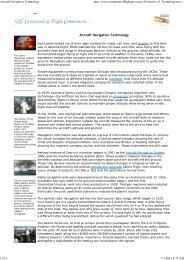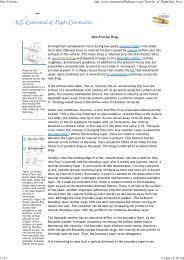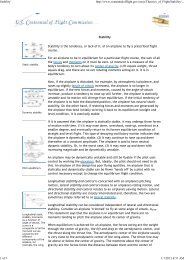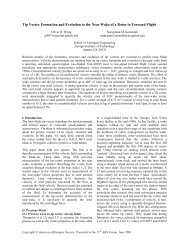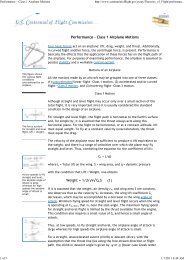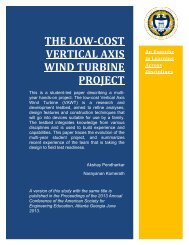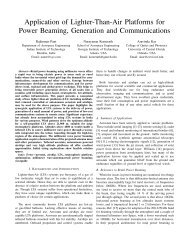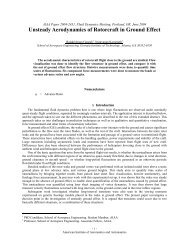Boeing-University Relations - A Review and Prospects for the Future
Boeing-University Relations - A Review and Prospects for the Future
Boeing-University Relations - A Review and Prospects for the Future
You also want an ePaper? Increase the reach of your titles
YUMPU automatically turns print PDFs into web optimized ePapers that Google loves.
<strong>Boeing</strong> Summer Intern ProgramA more traditional <strong>and</strong> long-st<strong>and</strong>ing “success” in bridging <strong>the</strong> school-to-work, industryacademicgap has been co-op/intern programs, generally involving undergraduates. Manycompanies offer such programs <strong>and</strong> many find <strong>the</strong>m to be as beneficial as <strong>the</strong> <strong>Boeing</strong> programthat has been offered <strong>for</strong> several decades. If approached in a proper way, such programs seek toprovide a suite of experiences <strong>and</strong> knowledge complementary to what a student is exposed to inhis or her academic program of study. It is a relatively easy way <strong>for</strong> industry <strong>and</strong> academe tocooperate in this with benefits to all (<strong>the</strong> school, <strong>the</strong> students, <strong>and</strong> <strong>the</strong> company) in addition toproviding financial aid <strong>and</strong> resume` material to <strong>the</strong> student. <strong>Boeing</strong> operates a large SummerInternship program, with over 300 undergraduates in <strong>the</strong> Puget Sound area alone in 2004.Faculty interaction with this program varies, from “non-existent” to “close”. Follow-up orleverage at <strong>the</strong> university achieved through <strong>the</strong>se internships is limited, as valuable as <strong>the</strong>y are in<strong>the</strong> recruitment process.<strong>University</strong> PerspectivesFrom <strong>the</strong> perspective of junior faculty of <strong>the</strong> late 1980s <strong>and</strong> early 1990s, much of <strong>Boeing</strong>’sarticulation of <strong>the</strong> needs came across as “preaching to <strong>the</strong> choir”. The reaction was a mixture ofagreement <strong>and</strong> frustration – agreement with <strong>Boeing</strong>’s objectives, <strong>and</strong> frustration that <strong>the</strong> changesalready instituted at great pains (<strong>and</strong> often in <strong>the</strong> face of resistance) were not being recognized. Afew general beliefs of that time are indicated below:• Engineering curricula <strong>and</strong> modes of pedagogy have evolved through decades if not centuriesof experience, <strong>and</strong> it would take a tremendous amount of energy <strong>and</strong> dangerousexperimentation to move from <strong>the</strong> present to a new stable optimum.• Initiatives from NSF <strong>and</strong> industry had often come <strong>and</strong> gone, but academic curricular <strong>and</strong>reward structures were grounded in firm realities, which would outlive such transients.• Industry’s traditional attention span (months or at most a particular business cycle) was not areliable basis to sustain curricular changes whose effects would take a decade to see.• The Attributes list (Fig.1), though couched in general terms, was seen as pressure to injecteven more constraints into <strong>the</strong> curriculum. ** This last point is because <strong>the</strong> default method <strong>for</strong> addressing perceived curricular deficiencies is to add new “requiredcredit-hours” in <strong>the</strong> specific topic area indicated. Thus, new “required courses” in Statistics, Ethics, Teamwork <strong>and</strong>Communications would quickly add up to ano<strong>the</strong>r 12 credit-hours of constraints, squeezing out substance <strong>and</strong> time from<strong>the</strong> ever-decreasing “core curriculum” where students learned “hard engineering”. For instance, in a 205-quartercredit-houraerospace curriculum, roughly 60 hours were already devoted to state-m<strong>and</strong>ated subjects, leaving only aneffective 9 quarters <strong>for</strong> core technical subjects including ma<strong>the</strong>matics, physics <strong>and</strong> chemistry. Faculty generally assumedthat such new “requirements” would increase <strong>the</strong> liberal arts credit-hour allotments, ra<strong>the</strong>r than be woven into <strong>the</strong>iralready-crushed time to teach core engineering as was intended by <strong>the</strong> creators of <strong>the</strong> list. This was greeted with <strong>the</strong>same love <strong>and</strong> anticipation with which some of us in academe viewed our Advisory Boards’ insistence that we add aRequired core 3-credit course on “Total Quality Management”.Proceedings of <strong>the</strong> 2005 American Society <strong>for</strong> Engineering Education Annual Conference & ExpositionCopyright ASEE 2005, American Society <strong>for</strong> Engineering Education.


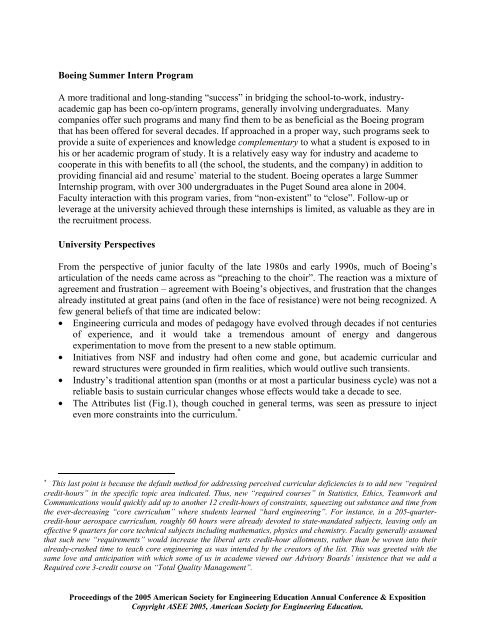
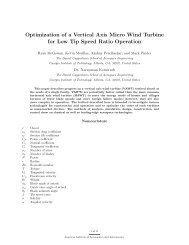
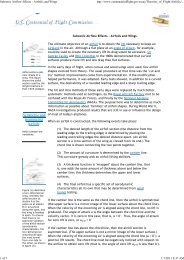

![p density of fluid, kg/m3 [Greek letter rho] V mean velocity of fluid, m ...](https://img.yumpu.com/50595898/1/184x260/p-density-of-fluid-kg-m3-greek-letter-rho-v-mean-velocity-of-fluid-m-.jpg?quality=85)
